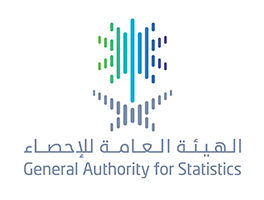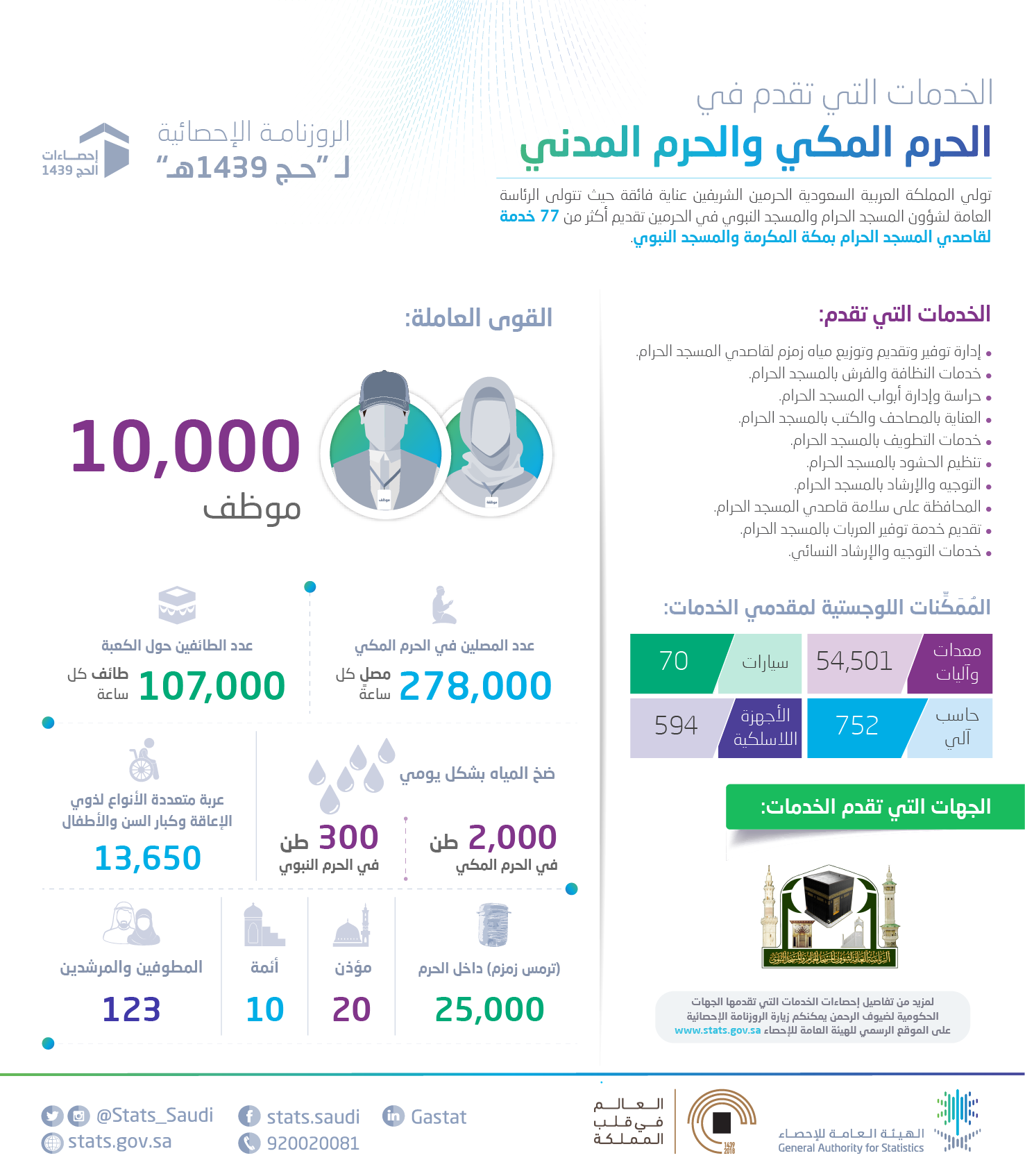GASTAT Releases Real Estate Price Index for Q1, 2019
GASTAT Releases Real Estate Price Index for Q1, 2019
General Authority for Statistics (GASTAT) has released the report of Real Estate Price Index for Q1, 2019. The report has been published on the official website of GASTAT www.stats.gov.sa.
The real-estate price index has edged down to 4.0%, compared to the previous quarter (Q4, 2018), where its indicator has reached (80.1) in Q1, 2019, compared to (80.4) in Q4, 2018. This decline can be attributed to the decrease in the main sectors composing the indicator: the housing sector (5.0%), the commercial sector (4.0%), and the agricultural sector (2.0%), compared to Q4 in 2018.
Regarding residential sector, the residential lands have witnessed a decrease in Q1, 2019 reaching (0.5%), compared to the previous quarter (Q4, 2018), and residential buildings have dropped to (0.6%). However, the following categories have increased recording in villas (0.1%), apartments (0.2%), and houses (0.2%). On the other hand, the commercial sector has showed a decline compared to the previous quarter for both commercial land plots and (exhibitions/ shops), recording (0.4%) and (0.3%), respectively, while commercial centers have risen by (0.3%). At the level of agricultural sector, agricultural lands have fallen to (0.2%).
It is worth noting that the index is based on registered-based data of real-estate transactions available at the Ministry of Justice. It is an essential tool that supports entities making economic and statistical decisions regarding the movements of real - estate prices and future forecasts during different periods of time. Moreover, the index has three main sectors consisting of several types of real estate classes: housing sector which includes (plot of land, building, villa, apartment, and house), commercial sector including (plot of land, building, exhibition/commercial center and shop), and agricultural sector with one category which is the agricultural land.
The real estate price index aims at finding accurate real estate statistical indicators that will help in measuring Saudi Arabia’s real estate market in line with global norms and standards.

رئيس مجلس إدارة الهيئة العامة للإحصاء يشكر خادم الحرمين الشريفين وسمو ولي عهده على الموافقة الكريمة لتنفيذ الاستراتيجية الوطنية للتنمية الإحصائية
The implementation will subject to monitoring and evaluation system that guarantees achievement at the level of all engaged entities, HE assured
GASTAT Board of Directors’ Chairman Thanks the Custodian of the Two Holy Mosques and HRH the Crown Prince for the Kind Approval on the National Strategy for Statistical Development
The chairman of board of directors of GASTAT, the Minister of Economy and Planning Ministry Mr. Mohmmad AL-Tuwaijri appreciated the kind approval of the Council of Ministers on the national strategy for the statistical development in the meeting that was held on Monday 18th of Sha’ban 1440.
HE thanked the Custodian of the Two Holy Mosques King Salman bin Abdulaziz and HRH the Crown Prince for the kind approval on the strategy. It is the first national strategy for the statistics sector in Saudi Arabia. In fact, the strategy was set to enhance and boost the information and statistical work in Saudi Arabia to reach to an effective response that can meet the increasing demand of statistical data and information. Moreover, the strategy will serve the development path of Saudi Arabia to fulfill its international, regional and national duties. It was based on an ambitious future vision up to 2030 with medium and long-term objectives to be achieved. The strategy has adopted five axes: First, the use of statistical information and data (demand axis), that aims at ensuring the improvement in the use of statistical information and data in Saudi Arabia, and meeting all users’ needs by providing easy-to-use statistical information and data in a timely manner. Second, statistical information and data production (supply axis), which seeks to develop administrative records to be gradually relied upon as a primary source of data, improve field operations, such as censuses, surveys and research, and apply the latest standards, methods and classification policies when collecting, analyzing and disseminating data. Third, the axis of modern technologies, that aims at using the latest technologies in all statistical work stages, and ensuring a high-quality infrastructure system. Fourth, the axis of communication and awareness, which aims at strengthening the society’s statistical knowledge through promoting education and raising awareness, and establishing a culture of communication among key actors within the Statistics & Information Sector. Fifth, the axis of governance through which GASTAT seeks to consolidate the principles that govern the Statistics & Information Sector’s activities, establish a culture of results-based management, ensure the sustainable development of human resources, and attract highly-qualified individuals.
Implementation of this strategy will be subjected to monitoring and evaluation system that guarantees accurate implementation at the level of all engaged entities, HE affirmed. On the other hand, an annual report will be prepared and published on this matter, and two evaluations will be conducted for each five years. The strategy will be updated on a regular basis based on these elements and based on relevant updates as well; occurring inside and outside Saudi Arabia. GASTAT will work hand in hand with all engaged entities as well as all the components of the statistical sector in accordance with the approved strategies to achieve and meet the objectives of Saudi Arabia’s 2030 Vision and the initiatives of the National Transformation Program 2020, he added.

الهيئة العامة للإحصاء: تُصدر نتائج مسح التجارة الداخلية للربع الثالث من عام 2018م
GASTAT: Releases Internal Trade Survey’s Results Q3- 2018
The General Authority for Statistics (GASTAT) released on its official website www.stats.gov.sa the results of the "Internal Trade Survey for the Third Quarter of 2018". The survey is about a set of economic statistics and data for short-term use to measure the performance of the trade sector in order to assess its growth, and identify its strengths or weaknesses. Moreover, it is an important economic activity that contributes to increase employment and GDP, exactly like the retail activity which connects producers with consumers, and focusses on the features and components of establishments engaged in the activities of vehicles sale and repair as well as wholesale and retail sale trade.
The survey showed that the number of Saudi females’ workers of internal trade establishments increased by 4%, compared to the previous quarter. The workers’ number of internal trade sector in Saudi Arabia reached about one million six hundred ninety-three thousand workers by the end of the third quarter of 2018, including almost one million two hundred fifty-five thousands of non-Saudi workers. However, the number of Saudi workers of the same sector was approximately four hundred thirty-eight thousand workers.
Rate of worker’s productivity in internal trade activity increased by 1.12% compared to last year 2018, results showed. They also indicated that the total operating revenues(sales) of internal trade sector reached (151,389 million) one hundred and fifty billion, three hundred eighty-nine million riyals during the second quarter of 2018.
The total operating expenses of the sector during the same period reached (90,224 million) ninety billion, two hundred twenty-four million riyals. Therefore, the operating surplus of the three sectors activities during the third quarter of 2018 was about (49,424 million) forty-nine thousand, four hundred twenty-four million riyals.
Based on the results of the survey, the operating surplus of the wholesale trade was the highest among all the activities of the internal trade and was about (19,153 million) nineteen thousand, one hundred fifty-three million riyals during the third quarter of 2018. On the other hand, the operating surplus of the retail trade activity reached around (16,008 million) one thousand, six hundred eight million riyals. Finally, the operating surplus of the sale and repair of motor vehicles and motorcycles activity accounted to almost (14,262 million) fourteen thousand, two hundred sixty-two million riyals.

